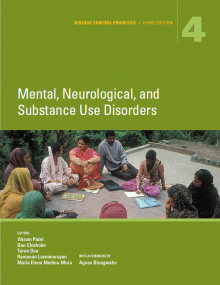

-
The public health burden of MNS disorders, as estimated by disability-adjusted life years, is on a sharp upward trajectory; it increased by 41 percent between 1990 and 2010 and now accounts for one in every 10 years of lost health globally. Even this sobering statistic is an underestimate, because it does not explicitly take into consideration either the substantial excess mortality associated with these disorders, estimated in this volume for the first time, or the enormous social and economic consequences of MNS disorders on affected persons, their caregivers, and societies.
-
A wide variety of effective interventions can prevent and treat MNS disorders. Although some of these interventions are also supported by evidence of cost-effectiveness, significant gaps remain in the availability of evidence to support the scaling-up of many interventions. Some of these interventions can have significant impacts on other global health and development priorities. For example, the effective management of maternal depression can affect child health outcomes, and the effective management of conduct disorders in children can affect adult antisocial and criminal behavior.
-
Best practice interventions for MNS disorders can be appropriately implemented across a range of population, community, and health care delivery platforms.
At the population-level platform of service delivery, best practices include legislative and regulatory measures to restrict access to means of self-harm/suicide and reduce the availability of and demand for alcohol.
At the community-level platform, best practices include maternal mental health interventions, parenting programs in infancy and childhood, and life skills training in schools to build social and emotional competencies in children and adolescents.
At the health care platform, three delivery levels are relevant: self-management; primary, community level, and continuing care; and hospital channels.
-
The costs of providing a significantly scaled-up package of specified cost-effective interventions for prioritized MNS disorders is estimated at US$3–US$4 per capita per year in low- and lower-middle-income countries, and at least double that in upper-middle-income countries. This package includes interventions at the population, community, and health care levels. Since a significant proportion of MNS disorders may run a chronic and disabling course and adversely affect household welfare, it is important that intervention costs are largely met by governments through increased resource allocation and financial protection measures. Investment of public resources in the prevention and treatment of MNS disorders addresses a large and neglected public health concern; if targeted wisely, this investment will produce substantial economic as well as health benefits in populations at an affordable cost. A policy of moving toward universal public finance can lead to a far more equitable allocation of public health resources across income groups.

